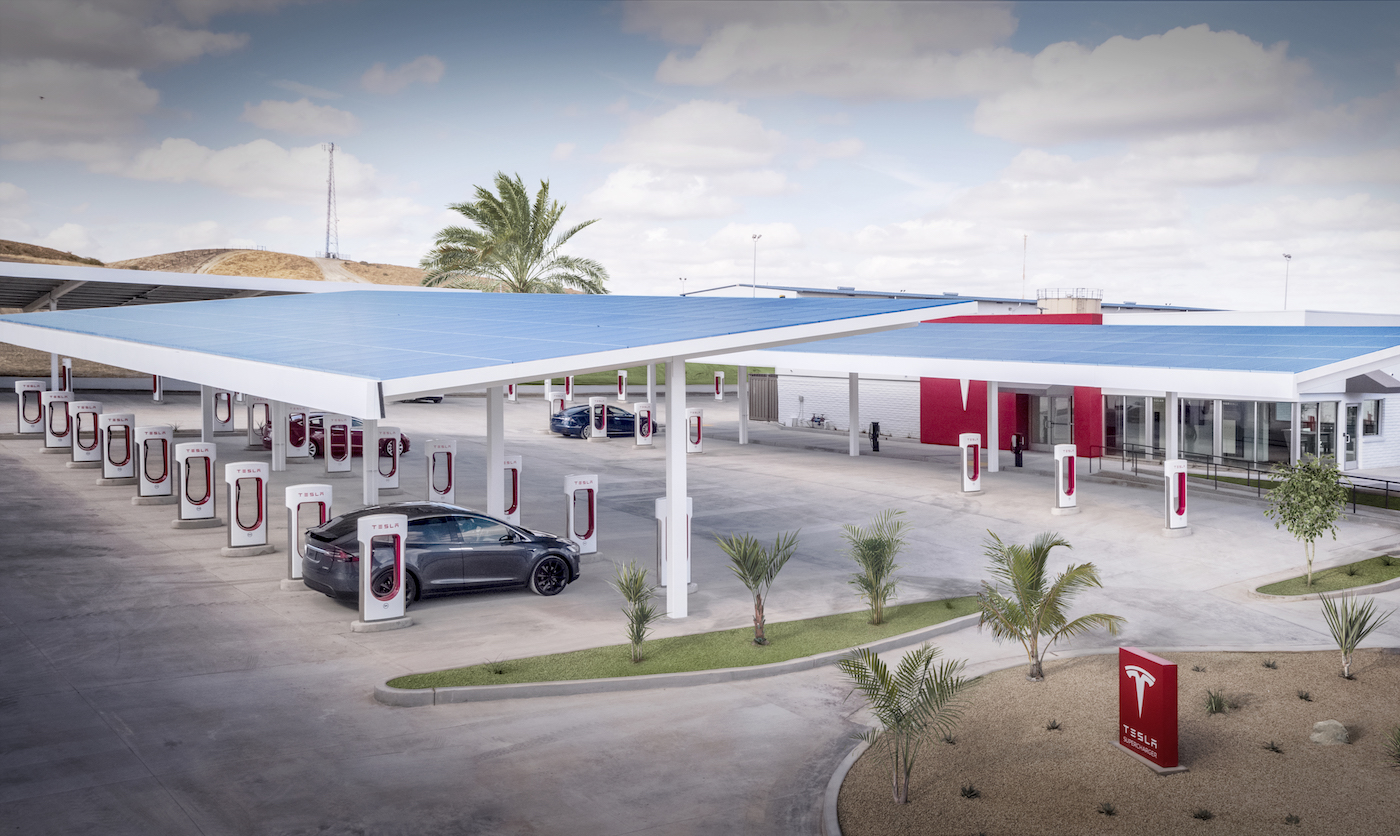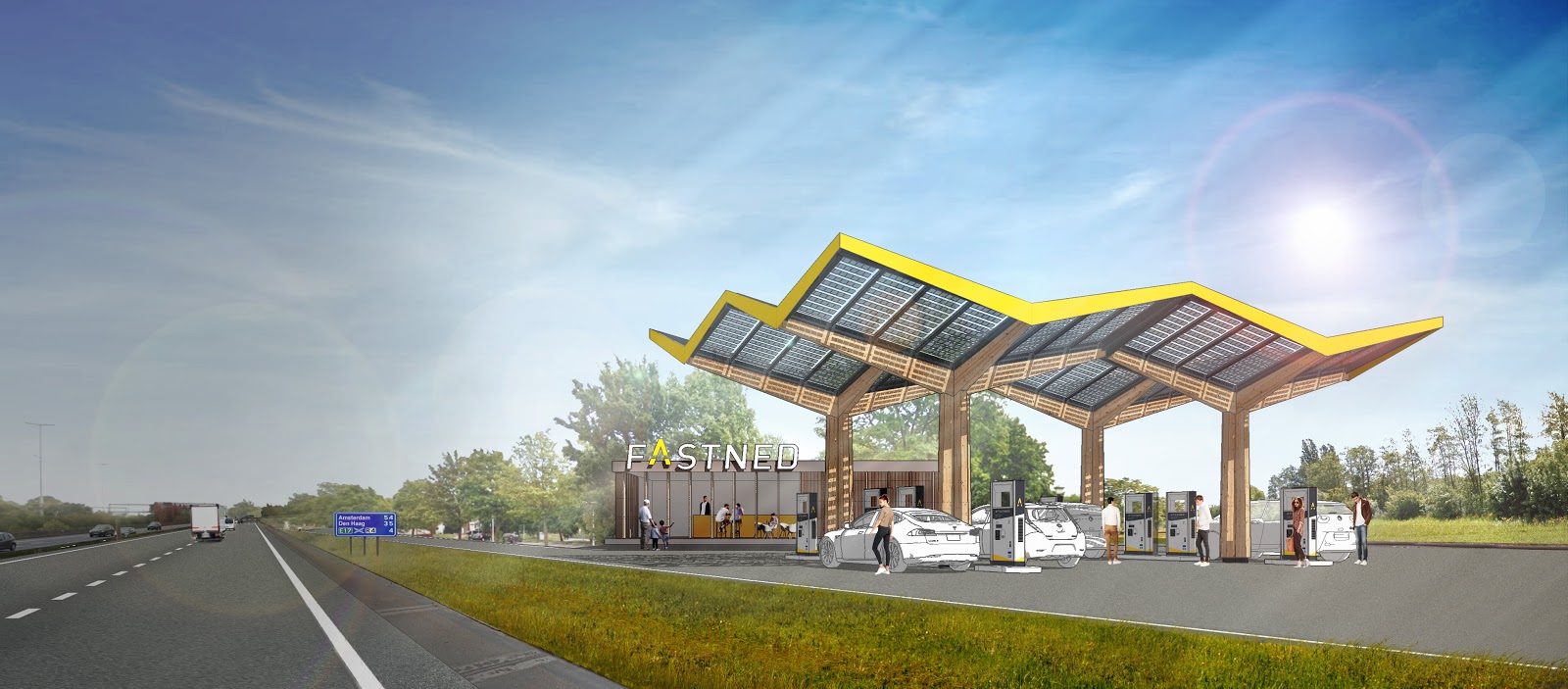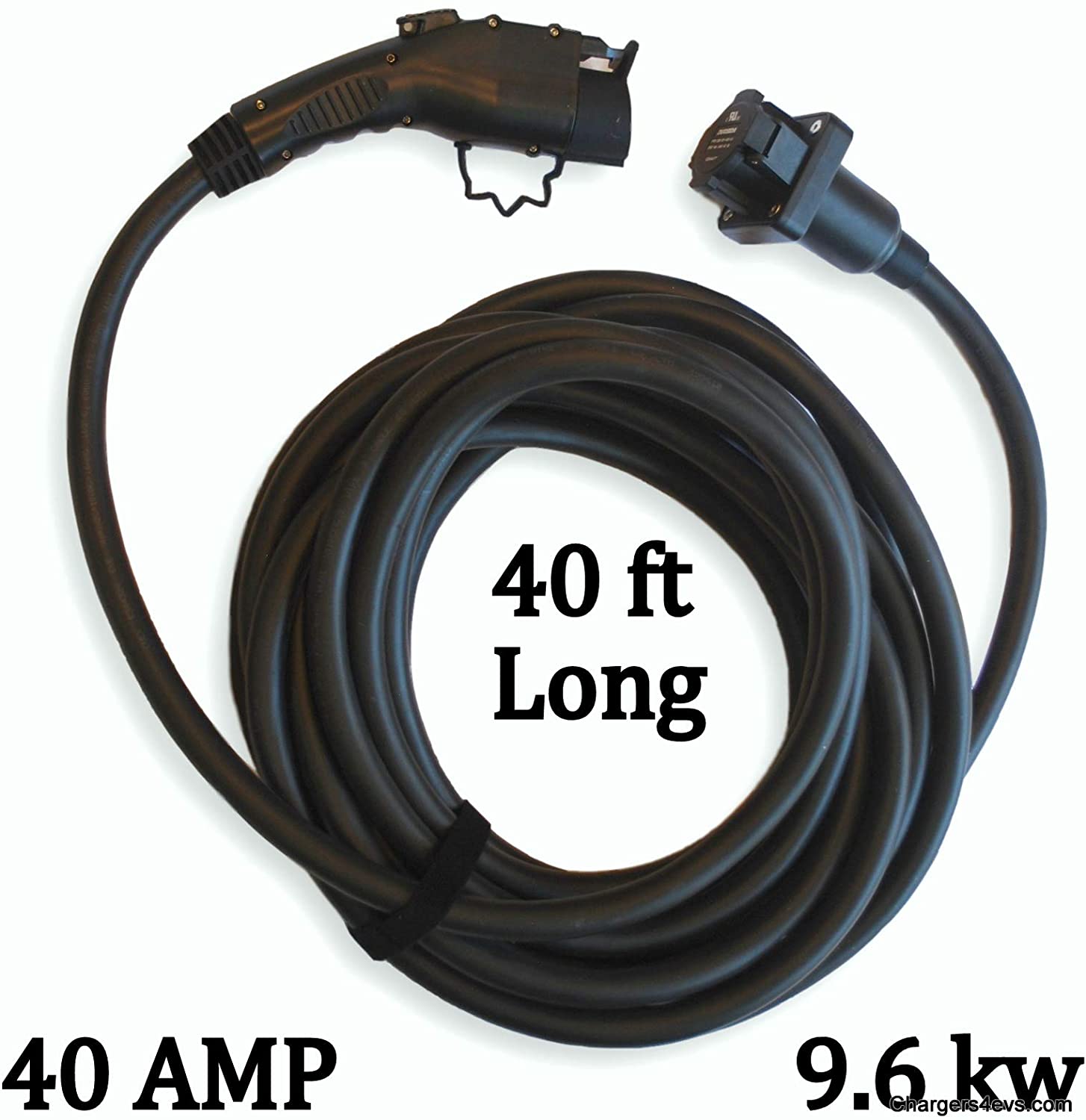Last Update: June 26, 2019
A primary question about electric cars is charging speed. When will an electric car charge in 5 minutes? We collectively have 100+ years experience with a quick refueling experience, gaining 300+ miles gasoline range in about 5 minutes. Of course folks who currently drive gasoline vehicles are going to ask about this, and look askance at the need to spend hours waiting to recharge the car.
Replicating the gasoline car experience may be required to bring over some folk who won't otherwise drive an electric car.
The current best (mid 2019) in the electric vehicle space is 300 miles range in about an hour, at the Tesla Supercharger stations. The non-Tesla charging systems (CHAdeMO and Combo Charging System) are catching up. Charging rates over 100 kiloWatts, or about the same as Tesla offered 5+ years ago, are starting to be offered at CCS and CHAdeMO stations with charging rates up to 350 kiloWatts being promised Real Soon Now.
Even though the 120 kiloWatt charging rate means less range per hour of charging than gasoline refueling, it's enough that people routinely take Tesla Model S and Model X cars on coast-to-coast road trips.
Let's talk about what it would take to replicate a 5 minute recharge experience in an electric car. Gasoline car owners do this every day. Maybe electric car owners deserve a similar experience.
Will the batteries take it?
Lithium-ion batteries store electricity/energy in chemical bonds. Reformulating those chemical bonds is not an instantaneous process, especially as the battery pack is closer to being full. There is an analogy between charging a battery pack and filling the seats in a conference hall. When the conference hall is mostly empty it's easy for people to find a seat, and they just sit down. As it fills, the people have to search for a seat before they can sit down. Likewise, in a battery pack, electrons are looking for an atom/molecule to land in, and as the battery pack fills up the electrons have a harder time finding a place to land. Therefore as a battery pack fills up, the electrons are jostling around looking for a molecule to land in, forcing the charging process slows down, and a heat buildup.
Batteries have two ratings of interest to this discussion. Each of the ratings are measured in "C" units, so lets talk about what "C" means first.
Batteries are rated for energy capacity in "amp-hours", and 1 amp hour is 1 amp of consumption for one hour. It's known that the energy quantity you can extract from a battery depends on the discharge rate. Typically the higher the discharge rate, the less total energy you can extract. Therefore the amp-hour rating is measured at a standard discharge rate.
A 1C rate is the rate equal to the rating of the battery. Charging (or discharging) 10 amp-hour battery at a 10 amp rate is described at 1C. At a 20 amp rate, it is described as 2C, or at a 5 amp rate it is described as C/2.
When an electric car is fully recharged in one hour, that is a 1C charge rate. To recharge an electric car in five minutes requires a 12C charge rate.
Typically lithium-ion batteries can't charge that fast. A 1C charge rate is thought to be the fastest lithium-ion batteries can be recharged without damaging the pack.
But, the actual fastest-safe-charge-rate depends on the precise chemical formulation of the battery pack. Some can charge faster than others. Battery makers and car makers have test systems to repeatedly charge and discharge battery packs, to measure heat buildup and battery capacity degradation at different charge rates.
It's possible that battery makers have developed batteries which can charge more quickly. Or it's possible that testing by battery makers and auto makers have shown that a higher charge rate is possible without damaging the pack.
What we do know is that car makers are promising a 350 kiloWatt charging rate Real Soon Now. For an electric car with a 120 kiloWatt-hour battery pack, a 350 kW rate is approximately a 3C charging rate, and for a 100 kiloWatt-hour battery pack that's a 3.5C charge rate. That charge rate is well above the 1C rule of thumb mentioned earlier. Therefore the car makers must have developed a breakthrough to support moving to the higher charge rate.
Implementation of higher charge rate
The promise of a 350 kiloWatt charging rate was not accompanied by a warning it would require a different charging connector. Therefore the powers-that-be decided the existing DC fast charging connectors will handle this higher charge rate. They have talked about liquid cooling the charging cable, however.
Why liquid cooling? It has to do with heat build-up in the charging system, and the power limitations of charging cables. For a similar reason Porsche is pushing for the standard voltage in electric cars to move to 800 volts, whereas most electric cars today use 400 volt. At 800 volts the charging system can pump twice the kiloWatts through the same cable that a 400 volt system.
Since that paragraph had a lot of technical detail let's unpack it.
Electrical cables are measured by the number of amps they can carry. A 4 gauge wire can carry a lot more amps than a 10 gauge wire or a 20 gauge wire. That's why battery cables in gas cars are usually 4 gauge, to safely carry the amps required to start a car engine.
As you run more and more current through a wire the wire heats up. If you want to experiment with this, take an extension cord that has multiple outlets at the end. Plug a pair of hair dryers into the extension cord, and turn them on full. The extension cord should get pretty hot.
Notice that we said wires are rated by the amps they carry. Watts is volts times amps.
A 50 kiloWatt charger is 400 volts at 120 amps (approximately). Moving to 800 volts at 120 amps is a 100 kiloWatt charge rate (approximately).
If I've done the math right, a 350 kiloWatt charge rate at 400 volts is 875 amps. That's quite a jump, and therefore we can expect some heat build-up, and a need for a cooling system.
The Tesla Supercharger at 120 kiloWatts gives about 170 miles range in 30 minutes. Giving 300 miles range in 5 minutes requires 12x that energy, or about 1.4 megaWatts. Unless I got confused with the scribbles on the back of this napkin.
The Supercharger cable is nice, supple, thin, and delivers energy through a very nicely shaped easy to handle charging plug. That's very much different from the experience with, say, CHAdeMO charging cords that are ungainly. But, to deliver 12x the electricity will require a much larger cord. Unless Tesla Motors is able to, as Elon Musk once suggested, make headway with liquid cooled charging cords.
Beyond the charging cord is the sheer impracticality of delivering a megaWatt for each car at a charging facility. What electrical utility will be able to deliver that much energy to such a facility?
A charging facility might have co-located energy storage and solar panels, to mitigate the energy consumed from the grid. But is it practical to install a several megaWatt solar array and several megaWatt-hours of energy storage at each charging facility?
We'll have to see how this turns out.
The likely result
The forces behind the Combo Charging System have begun demonstrating a 350 kiloWatt charging rate. That would give about 170 miles range in 10 minutes, a big improvement over the 30 minutes currently required. It's unknown when this will be widely deployed. It's unlikely every DC fast charging station will be upgraded to this rate.
In other words it's very likely the charging rate will be improved at some electric car charging stations. It's also likely there will be a range of DC fast charging rates at different charging stations depending on the needs of users of a given site.
The implementation of a 350 kiloWatts charging is likely to take several years. To my knowledge none of the currently available (mid-2019) electric cars support that charge rate. That leads to a chicken-and-egg problem where the charging networks wait for car makers to support 350 kiloWatts, and the car makers might wait for charging networks to deliver. And of course Tesla will just go ahead and do it.
Can we collectively grow the patience required to wait a little longer for a recharge?
The impracticality of a 1+ megaWatt charge rate is likely to keep us from a 5 minute recharge. A facility with 20 charging stalls each charging at 1 megaWatts would be running at 15-20 megaWatts if all stalls are occupied. Is it feasible to deliver that much energy to one place? And if there are a hundred such facilities in a city?
As mentioned earlier, on-site energy storage and solar power systems will help to mitigate the electricity consumption of these charging facilities.
For example, a hybrid battery design could be used with supercapacitors handling the ultra-high charge/discharge rate, and using lithium-ion or lithium-sulfur or lithium-air for bulk energy storage. Supercapacitors can discharge/charge at an extremely higher rate, and could handle the 1 megaWatt charge rate, with a charge controller then shuttling energy over to the bulk energy storage unit at a safe charge rate.
But -- will the powers-that-be ever let regular people handle charging cables capable of 1+ megaWatts? Will they ever allow charging facilities running at that rate? That's unlikely.

This is an actual Tesla Supercharger location in Kettleman California. Tesla has long said this will be their model for Supercharger locations, combining sufficient on-site solar and energy storage services to handle electricity needs. The building in the background has Tesla logo's on it, and could easily be a coffee shop or the like.
Make some substitutions and this facility could have CCS charging stations owned by a competitor charging network. The building in the background could be a gas station serving gasoline cars, and there could be a cluster of fast food restaurants nearby.

This is another variation on the same idea. Fastned is a fast charging network based in the Netherlands, which has perhaps expanded into other nearby countries. They focus on fast charging services along roadways. This is a concept facility with a few fast charging stations, a canopy that probably has solar panels, and in the background some kind of building that probably houses a coffee shop. It is obviously located right next to a highway - the rules for this must be a little different in the Netherlands than in the USA.
The only qualm about this is the canopy looks to be suboptimal for solar panels. First, it could be a lot larger and collect a lot more energy. Second, the optimum angle for solar panels is to be facing due south at a certain angle, not with a random collection of angles like this.
Battery swapping?
If we reformulate the question, it becomes - What will it take for electric cars to gain energy at a rate that adds 300+ mile range in five minutes like gasoline cars do?
The act of "gain energy" can be performed by swapping a depleted battery pack for one that's fully charged. Multiple companies have demonstrated battery swapping in under five minutes. Clearly we could implement a battery swapping system right now and electric car drivers would enjoy the same recharge time as gasoline car drivers.
But, there are many problems with the whole battery swapping idea. The business proposition was that battery prices would remain expensive, and therefore electric car owners would want to lease their batteries rather than own them. In practice when Renault sold the Renault Zoe with a leased battery pack, customers balked. Nowadays the Zoe battery pack is bundled with the car purchase, just like for every other electric car. And the battery swapping system promised for the Zoe was replaced by a fast charging system.
None of the battery swapping systems which were developed for electric cars gained traction, and they've all been abandoned. See Wouldn't battery swapping be preferable over waiting to recharge?
Is the five-minute recharge even required?
The average driver travels 40 miles or less per day. How often do we take road trips where the goal is covering as many miles as possible? When is a five-minute recharge time actually required?
In the vast majority of recharging scenarios, we plug in the car then walk away and do something else. The time commitment is less than a minute to set up the charging. The rest of the time for the charging session doesn't count, because we're not waiting around.
It's when we're on a long road trip with multiple recharging sessions per day that the recharge time becomes significant. How often does the typical person take such trips? A couple times a year?
The health benefits of a longer recharge time
After a 240 mile stretch of driving, you've been sitting in the car for about 4 hours. The driver has, for four hours, been intently focused on the road and the other cars, avoiding collisions, and otherwise staying at high alert for four hours or so.
Wouldn't it be healthy to get out of the car for a half hour or so and decompress? To stretch your legs, to take a pee break, to have a meal, etc?
Maybe it's okay for the recharge time to be a half hour instead of 5 minutes?
Maybe the best form for a highway charging station facility is a coffee shop or fast food restaurant coupled with charging stalls and a solar array over the parking lot. The format would be like the pictures shown above.




